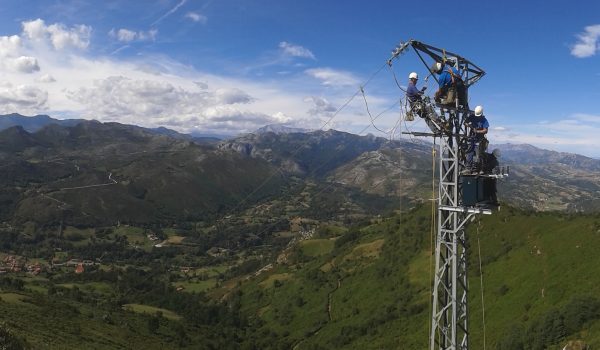What impact for the Grid of the future?

The COVID-19 crisis affects the entire society and large parts of the economy. The duration of the crisis and its consequences cannot be accurately estimated today. Does it have also an impact on the energy transition? And what impact will it have on the Grid of the future? Arnaud Banner, Technical Director of Omexom, gives his vision.
What are the consequences of the COVID-19 crisis for the energy transition in the past six months?
To be clear, I do not pretend to be an economist, so I cannot answer this question properly. However, because of this very extraordinary situation, it is actually impossible for anyone to have a vision of what exactly the consequences of the pandemic will be. But of course I do see the consequences for our direct customers: the energy producers and the transmission and distribution system operators (TSO’s and DSO’s). Energy producers are seeing a temporary decrease in energy consumption. As in many other sectors, demand has dramatically dropped down.
In Europe, transmission and distribution operators are Regulated Asset Based (RAB), which means they get revenues from their capacity to transport electricity and not proportionate to the energy flowing through them.
So the influence of the COVID-19 crisis is not zero, but also not significant.

The Grid will have to become more interconnected, finer meshed and more flexible in order to deliver on the promises of the energy transition.
Arnaud BANNER
Technical Director Omexom
Can it be expected that all parties involved will make fundamentally new choices for the short and long term?
We see that major overhaul and upgrade projects have been postponed because of a lack of manpower. However, for the majority of our businesses, there is no decrease in activity, but rather an acceleration of activity at our customers. For two main reasons: the planned work has been postponed and will soon be resumed. And: after this pandemic, the populations of most countries are even more excited about the energy transition.
The Governments have launched recovery plans and are investing a lot of money in the economy and particularly in renewable energy sources. And more renewable energy simply means more networks. By the way, this is not my own analysis, but that of the ENTSO-e (Eurepean Network of Transmission System Operators for electricity) and EDSO (its equivalent for DSO’s) and also the advice we received from operators we work for.
What do you see as the most important trends influencing the energy transition?
The most important drivers for the energy transition are: energy savings, energy efficiency, self-generation, electric mobility and green hydrogen These developments will continue and depend on the expansion and modernization of the Grid.
Self-generation was already a trend before the pandemic. We expect and see that this trend will continue and accelerate. Due to two factors. First, people are linking the pandemic to the climate, I don’t know exactly why. And secondly: there was of course a huge economic setback due to the lockdown, which meant that a lot of money was invested in the economy and especially in the energy sector.
Are there major differences between European countries? What can we learn from each other?
The impact of the pandemic on this sector is actually about the same in all countries. This is also because the regulations for this sector are roughly the same in all countries (Regulated Asset Based). There are actually no major differences between European countries. Except that in some countries network companies are still owned by energy producers. So the ownership structure can lead to different situations. The energy producer who have had a loss of revenues may expect a financial effort from their TSO/DSO branch.
The lessons we have learned, is that our decentralized management model is the perfect response to local and specific situation and make quick and efficient decisions.
Arnaud BANNER
Technical Director Omexom
You’ve already mentioned the main drivers for the energy transition: energy savings, energy efficiency, self-generation , electric mobility and green hydrogen . And that these developments will continue and depend on the expansion and modernization of the grid.
What does this modernization entail and will this modernization lead to a fundamentally different grid? In other words, will the current COVID-19 crisis fundamentally change the concept of future networks or can they stay as they are now?
The Grid will need to be more interconnected, meshed and flexible in order to deliver on the promises of the energy transition. And possibly according to the vision of ENTSO-E an additional HVDC (High Voltage Direct Current) Supergrid will emerge across Europe (Program E-Highways 2050). We are already part of it, for example we have just commissioned the IFA 2 (FRANCE-UK) HVDC Interconnector on the French side.
What has Omexom, as a technical service provider for energy producers and network companies, learned from the COVID-19 crisis so far? And what will Omexom possibly do differently in the future?
We still don’t know if the disease will disappear or not, if a vaccine will soon be available, or just if we simply will have to “live with it”. We have already changed and adapted our ways of working and integrated them in our sanitary protocols. The lessons we have learned, is that our decentralized management model is the perfect response to local and specific situation and make quick and efficient decisions.
